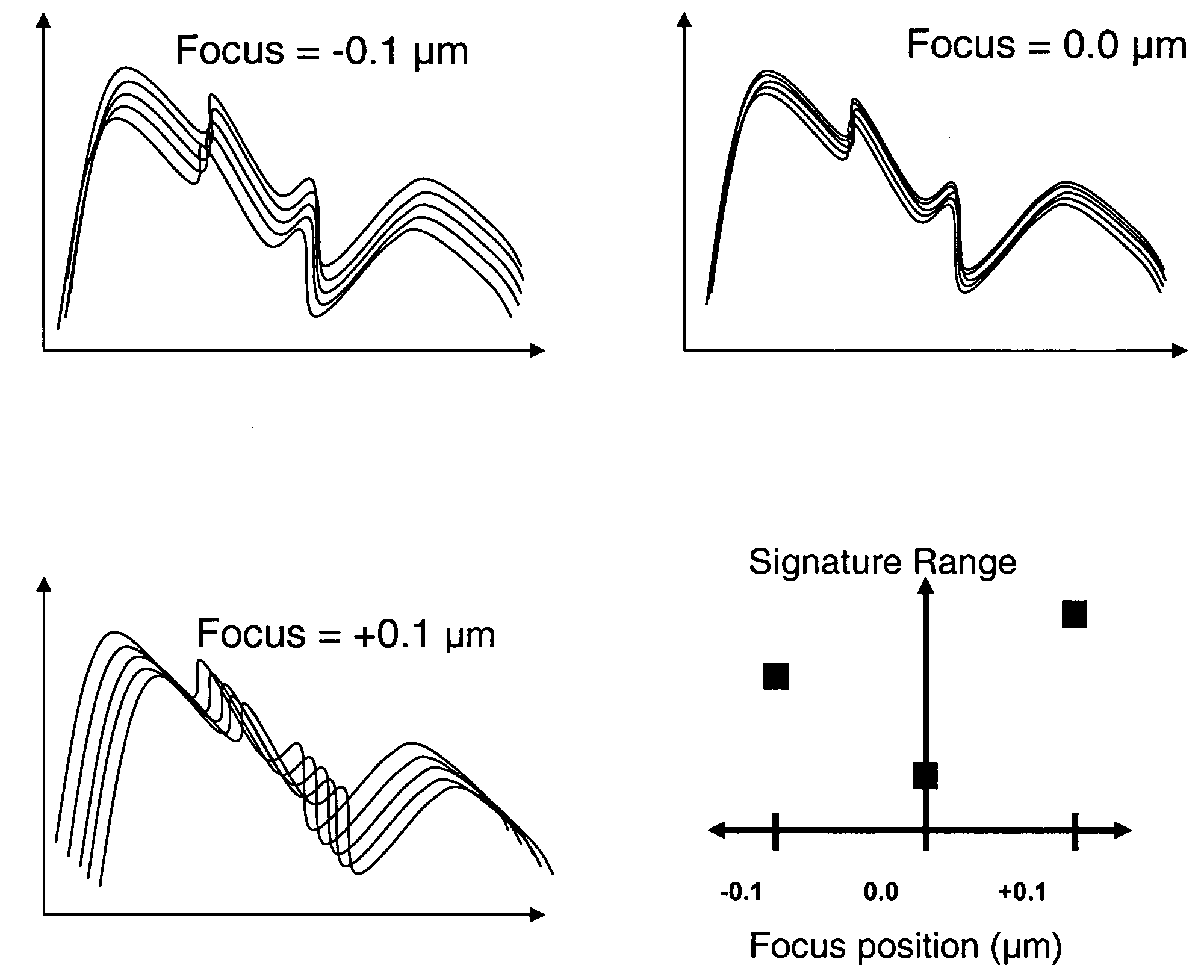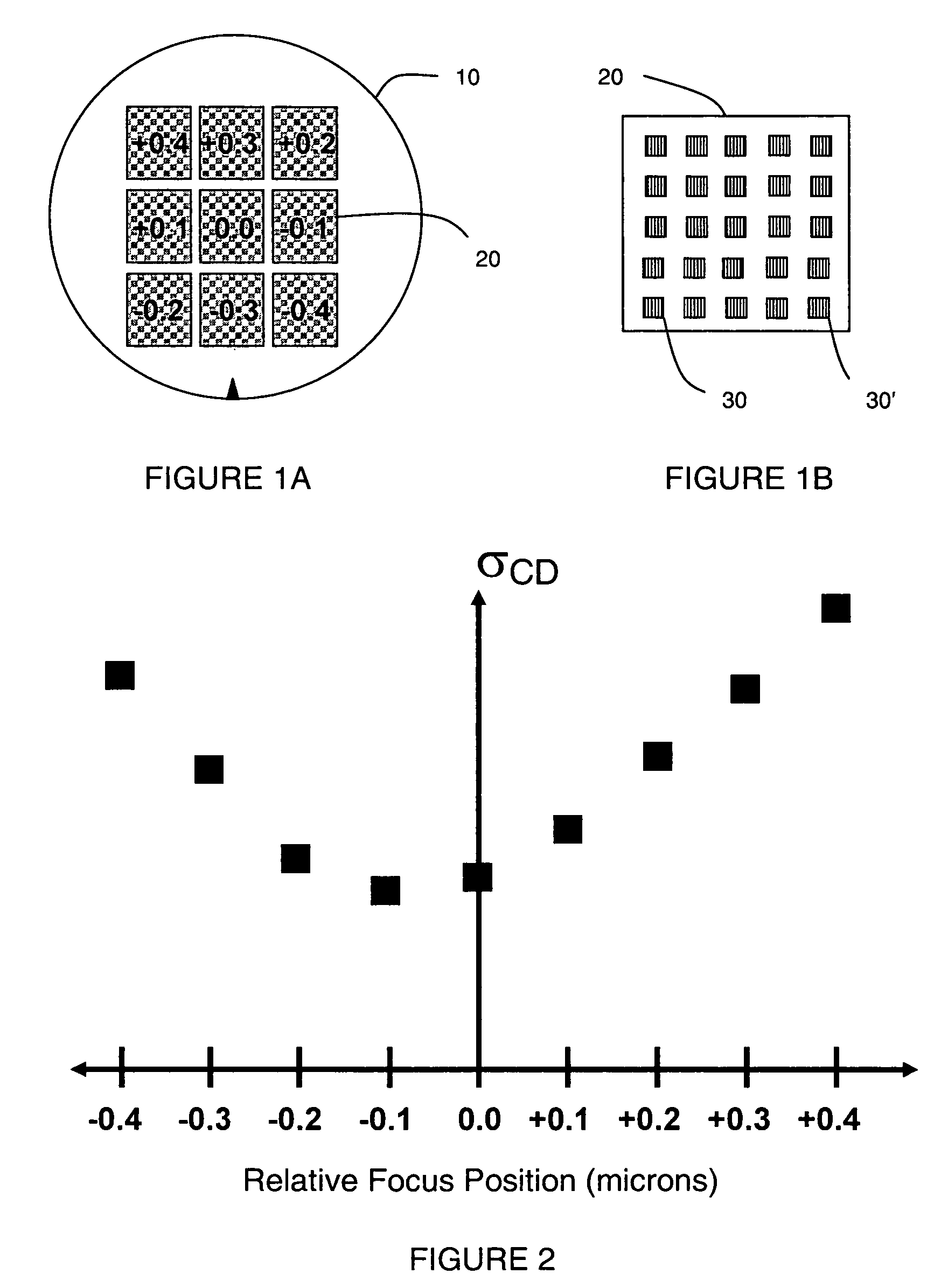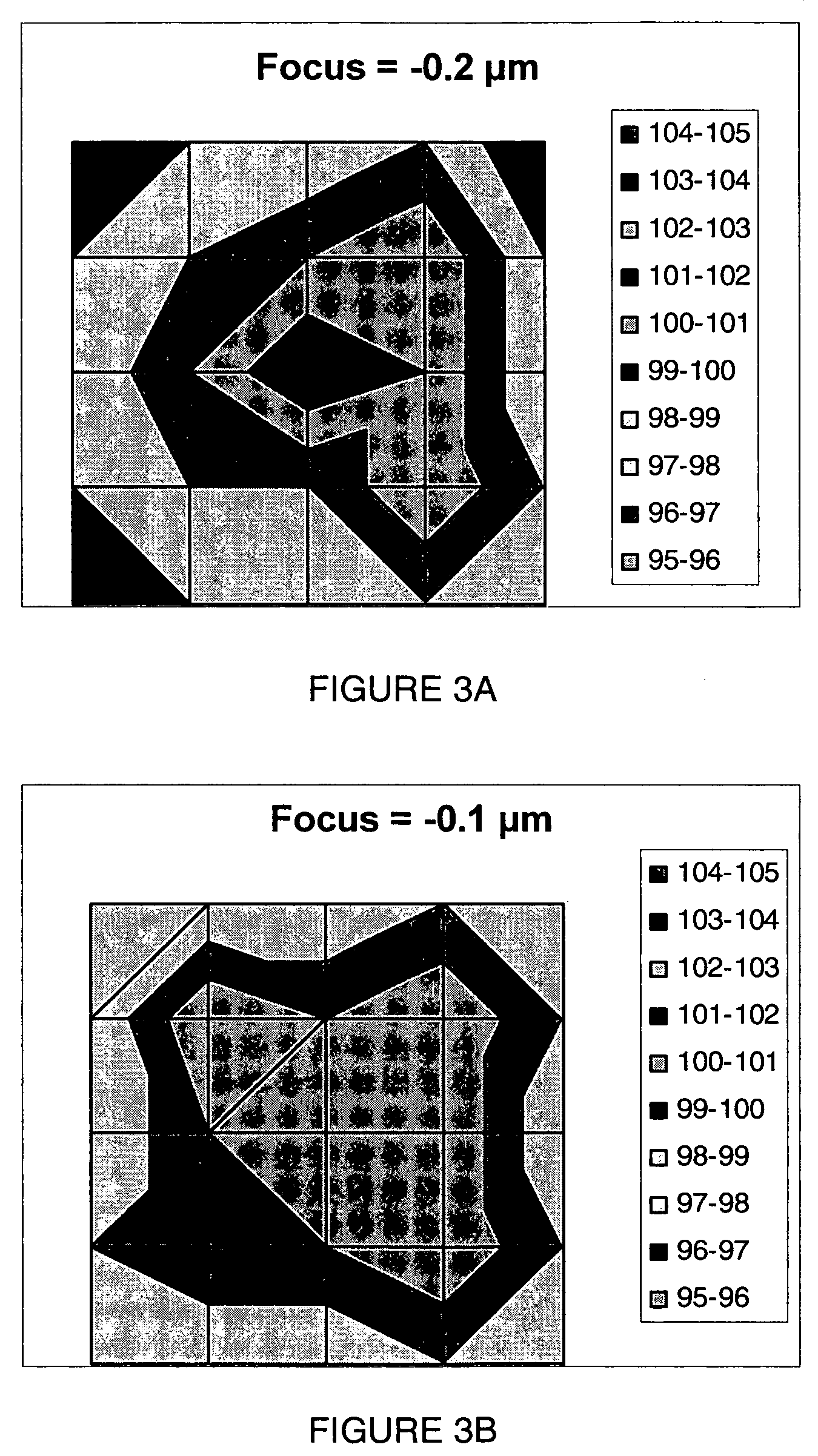Determination of center of focus by parameter variability analysis
- Summary
- Abstract
- Description
- Claims
- Application Information
AI Technical Summary
Benefits of technology
Problems solved by technology
Method used
Image
Examples
example 1
[0100]According to the present invention, five fields are exposed at different focus values, taken through focus from −0.2 microns to +0.2 microns in 0.1 micron increments. Each field contains a 5×5 array of equally spaced diffraction structures, similar to that depicted in FIG. 1B. FIGS. 3A–3E graphically display the CDs of the diffraction structures in each field. FIG. 4 is a graph of the 1-sigma standard deviation of the CDs of all 25 diffraction structures in each field. As above, best focus is achieved for the −0.1 micron focus setting.
[0101]For real time focus monitoring and process control, it is important to be able to correct for focus drift before it becomes too large. Thus it is advantageous to monitor the CD or other chosen feature of a subset of the diffraction structures which exhibit a larger variation in the chosen feature than the variation of all 25 diffraction structures in each field. For example, chosen features of diffraction structures located in the corners o...
example 2
[0103]According to the second preferred embodiment discussed above, FIG. 7 depicts the diffraction signatures arising from five spaced diffraction structures within each of three fields shot at different focus values. In this example it is easily determined by inspection that the variation in signatures is minimum for the field shot at the 0.0 micron focus point. The graph in FIG. 7 plots the range, or spread, of the signature intensities for each field. As expected, the minimum value is for the field shot at 0.0 focus, which field is at best focus. This method may be substituted for the embodiment described above for all purposes, including those of process control and focus drift monitoring.
example 3
[0104]A typical process control application involves monitoring the variation over time of the chosen feature as multiple wafers printed with the same mask and using the same process are manufactured. FIG. 8 depicts variation of the chosen feature (in this case, variation of CD measured as the 3-sigma of measurements, preferably across the illumination field previously determined according to the methods of the present invention to be at center of focus) measured at one hour intervals. Because the same diffraction structures in the same field are measured for each wafer, and each wafer is printed with the same mask and process, the variability should be the same for each wafer. However, the focus of the lithography tool may drift with time, which leads to higher CD variation, as shown in FIG. 8. Based on prior knowledge an acceptable amount of variation for process control might be 2.4 nm. Hence, a control limit of 2.4 nm is shown in FIG. 8 with a dashed line. Variation within the c...
PUM
 Login to View More
Login to View More Abstract
Description
Claims
Application Information
 Login to View More
Login to View More - R&D
- Intellectual Property
- Life Sciences
- Materials
- Tech Scout
- Unparalleled Data Quality
- Higher Quality Content
- 60% Fewer Hallucinations
Browse by: Latest US Patents, China's latest patents, Technical Efficacy Thesaurus, Application Domain, Technology Topic, Popular Technical Reports.
© 2025 PatSnap. All rights reserved.Legal|Privacy policy|Modern Slavery Act Transparency Statement|Sitemap|About US| Contact US: help@patsnap.com



